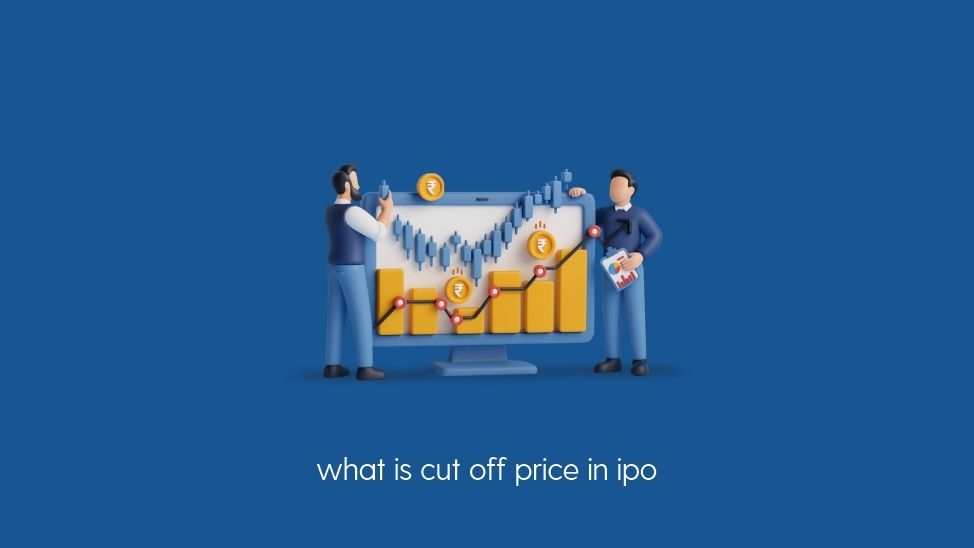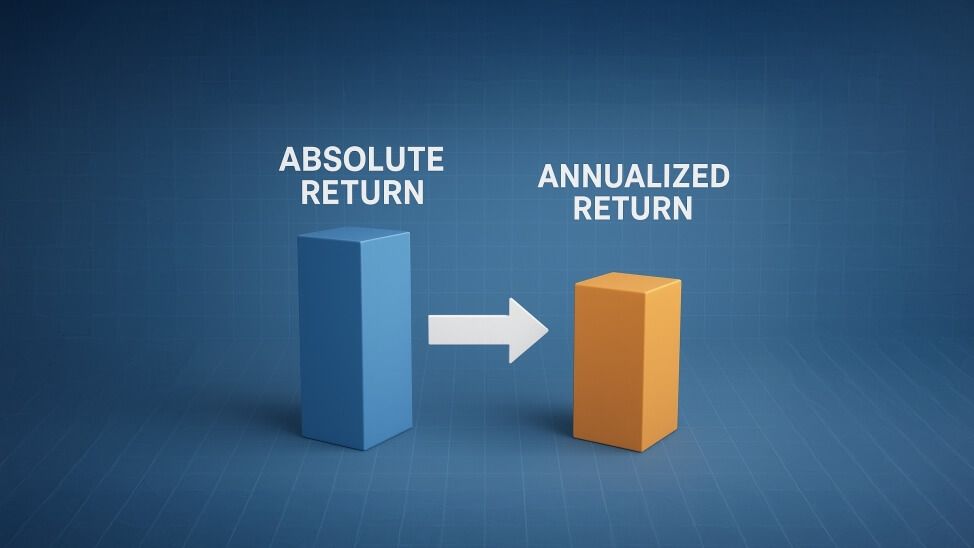What Is Cut Off Price In IPO

- Published Date: October 13, 2025
- Updated Date: November 28, 2025
- By Team Choice
If you are interested in IPO investing, you have likely come across the important term “cut-off price.” But what does it really mean? The cut-off price in an IPO plays an important role in determining how shares are allotted and at what price you get them.
In this guide, we’ll explore what is cut off price in IPOs, cut off price meaning, how it’s determined, why it matters, and how you can decide whether to select it while applying for one.
Cut Off Price Meaning In IPO?
In an Initial Public Offering , at cut off price in IPO refers to the final price at which shares are allotted to investors. This price is decided by the company after evaluating investor demand during the bidding process. In simple terms, the ipo cut off price is the actual issue price, which can be any value within the announced price band.
According to the guidelines set by the Securities and Exchange Board of India (SEBI), only retail individual investors are allowed to apply for shares at the cut-off price. This pricing method is commonly used in a book-building IPO, where the company specifies a price range (floor or cap price) in its prospectus. The final price is then determined based on bids received, usually within or above the floor price.
Two Types of IPO Pricing in India
There are two primary types of IPO pricing methods in India:
1. Fixed Price Issue:
In a Fixed Price Issue, the company sets a specific price for its shares before the IPO opens. This means that all investors know the exact price they will pay while applying. The demand for the issue is revealed only after the IPO closes. For instance, if the issue price is ₹100, every investor applies at ₹100 per share. This method is straightforward but offers limited flexibility in discovering the fair market price.
2. Book-Building Issue:
A Book-Building Issue is the most common IPO pricing method in India. Instead of fixing one price, the company provides a price band, for example, ₹100 and ₹120 per share. Investors then place bids within this range based on their assessment of the share's value. After the bidding period ends, the company analyses all bids to determine the cut-off price, which becomes the final issue price for allotment.
How is the Cut Off Price Determined in an IPO?
Here’s a step-by-step guide on how to determine the cut-off price in an IPO:
- Price Band Announcement: The company going public declares a price band in its current IPO prospectus. This is the range within which investors can submit their bids, but most of them have the question of how to bid in ipo.
- Investor Bidding: Investors place bids specifying the number of shares they want and the price they are willing to pay, as long as it falls within the band. Retail investors can also opt for the cut-off price, meaning they agree to pay whatever the final issue price is.
- Demand Analysis: After the IPO closes, the company and its merchant bankers analyse all bids. They calculate the total demand at different price points within the band.
- Finalising Cut-Off Price: The cut-off price is the price at which the total number of shares offered equals the total demand from investors. All successful applicants who bid at or above the cut-off price receive allotment at this price.
How To Calculate The Cut Off Price?
Calculating the cut-off price of an upcoming IPO involves analysing the bids submitted by investors during the book-building process. Although there’s no fixed formula, the following guide can give you an idea of how it's calculated:
Here’s a simplified approach:
- Collect All Bids: After the IPO closes, the issue manager (usually the lead banker or underwriter) gathers all bids placed by investors, including those at different price points within the price band and bids at the cut-off price.
- Rank the Bids: Bids are arranged in descending order of price, highest to lowest. This helps identify the demand at each price level.
- Cumulative Demand Calculation: Starting from the highest bid, the cumulative demand for shares is calculated. This means adding up the number of shares requested at that price and all higher prices.
- Determine the Cut-Off Price: The cut-off price is the lowest price at which the cumulative demand equals or exceeds the total number of shares on offer. Every investor who bid at or above this price receives shares at the final cut-off price.
Example To Understand the Cut-Off Price in an IPO
Let’s consider a simple example to see how the cut-off price in an IPO works.
Suppose Company X launches an IPO with a price band of ₹80 - ₹90, and 100 shares are available. An investor places a bid for 10 shares at ₹82, thinking that the final issue price might be close to their bid. If the final issue price is set at ₹82 or lower, the investor gets the shares at their bid price. But if the final issue price is ₹87, the investor will not receive any shares because their bid was below the set price.
Now, consider another investor who chooses the cut-off price option instead of specifying a bid. This investor indicates they are willing to accept the final price determined by the IPO. When the cut-off price is declared as ₹87, they will receive the shares at this price without worrying about setting a specific bid.
Why is the Cut-Off Price Important in IPO?
The cut-off price in IPO is a critical concept for investors and companies alike, as it ensures fairness, transparency, and efficient allocation of shares. Here’s why it matters:
- Reflects True Market Demand: The cut off price is determined after analysing all bids submitted by investors. It represents the price at which demand for shares equals the number of shares offered, giving a true picture of market interest.
- Fair Allotment for Retail Investors: By selecting the cut-off price, retail investors indicate they are willing to pay the final issue price. This increases their chances of receiving an allotment, especially in highly subscribed IPOs.
- Price Discovery: The cut off mechanism helps the company identify a fair price for its shares based on actual investor demand rather than a fixed or arbitrary rate.
- Transparency in the IPO Process: Since the cut off price is publicly declared after analysing all bids, it ensures that the IPO allocation process is transparent and equitable.
- Simplifies the Application Process: Retail investors don’t need to guess the “right price” within the band. Selecting the cut off price allows them to participate confidently without worrying about overbidding or underbidding.
Factors Affecting The Cut-Off Price In IPOs
Several factors influence the cut-off price, including:
1. Investor Demand: The primary factor determining the cut off price is the overall demand for the shares. High demand often drives the cut-off price closer to the upper end of the price band.
2. Company Fundamentals: Investors consider the company’s revenue, profits, growth prospects, and management quality. Strong fundamentals typically lead to higher bids and a higher cut off price.
3. Market Sentiment: General trends in the stock market, investor confidence, and current economic conditions can influence how aggressively investors bid, impacting the cut off price.
4. IPO Valuation: The company’s valuation relative to its peers and industry performance plays a role. If investors perceive the IPO as fairly priced or undervalued, bids may push the cut off price higher.
5. Hype and Media Coverage: Media attention, analyst recommendations, and social buzz can create excitement, increasing investor participation and potentially raising the cut off price.
6. Macro-Economic Factors: Interest rates, inflation, and broader economic indicators can affect investor risk appetite, which in turn influences bids at different price levels.
Conclusion
Choosing the cut-off price in IPOs can improve your chances of getting an allotment, especially in oversubscribed IPOs, and simplifies the application process. By understanding how the cut off price is determined, calculated, and influenced by market factors, investors can make more informed decisions and approach IPO investing with greater confidence.
Remember, IPO investing requires opening a Demat account and understanding terms, including lot size in IPO, issue price, and cut off price. Next time you apply for an IPO, consider selecting the cut-off price to stay in the game, no matter where the final issue price lands.
FAQs
1. What happens if I don’t choose a cut-off price in IPO?
If you don’t select the cut off price, your bid will be considered only at your chosen price. If the final cut-off is higher, you may not receive any allotment.
2. Is allotment guaranteed at the cut-off price?
No, selecting a cut off price doesn’t guarantee allotment. It ensures that your bid remains valid at the final issue price, thereby increasing your chances.
3. Can HNIs and QIBs apply at the cut-off price?
No, only retail investors can apply at the cut off price. HNIs (High Net-worth Individuals) and QIBs (Qualified Institutional Buyers) must specify a bid price.
4. How is the cut-off price different from the issue price?
The cut-off price is determined based on demand, while the issue price is the final price at which shares are actually allotted. Often, both are the same in book-built IPOs.
5. Can non-retail investors bid at the cut-off price?
No. Only retail investors are eligible to bid at the cut off. Others must choose a specific price within the band.
6. Should I select a cut-off price in the SME IPO?
Yes, retail investors can choose the cut-off option in SME IPOs to improve allotment chances, similar to mainboard IPOs.
7. Can we bid above the cut-off price in the IPO?
No, you cannot bid above the cut-off price. The cut-off represents the maximum price determined after the bidding process.
8. Why select the cut-off price in IPO?
Selecting a cut-off ensures you remain eligible for allotment at the final price, even if it’s higher than your expected rate.
9. Who can apply at the cut-off price in the IPO?
Only retail individual investors (RIIs) can select the cut-off option when applying for an IPO through their Demat account.
Recommended for you

Absolute Return vs Annualized Return: Key Differences Explained

FII DII Data - Live Data

Share Market Prediction For Tomorrow
